HP’s TouchPad tablet never sold much in the few months that it was out. But, when HP announced that it was ceasing production of the device, that changed.
Consumers have cleaned out the market’s $99-$150 per-unit inventory of TouchPads.
At a time when Apple is selling all the iPads it can make and companies are launching new Android tablets that are increasing in market share every day, why did the TouchPad crash and burn?
Many factors play into the answer, falling basically into four categories: 1) issues with HP’s management, 2) a lack of apps and developer support, 3) the competition, 4) patience – or the lack of it.
Issues with HP’s Management
Issues at the top level of HP management may have impacted the TouchPad’s future.
First, there was the company’s previous leadership.
The TouchPad runs on Palm’s webOS, which HP acquired when it purchased Palm under the leadership of then-CEO Mark Hurd, who left under a cloud of scandal.
Second, HP’s leadership, both high-level executives and its board of directors, seem intent on moving the company away from client products, including tablets.
That combination essentially made the TouchPad the “Ugly Duckling of tablets”.
A Lack of Apps and Developer Support
Further, HP’s leadership may be struggling to map out a new strategy in the post-Mark Hurd era.
There’s no “(TouchPad) app for that”. Perhaps the most critical error HP made with the TouchPad project was not ensuring that there were enough apps for the tablet.
Tablets are essentially consumption devices, and they rely on apps for their appeal.
For example, Apple was able to rejuvenate what was a very stagnant tablet market to the point that it almost became a new market because of apps and iTunes. If you want to take on Apple, you must have the apps.
There are more than 90 thousand apps for the iPad, according to Apple’s website.
There are reportedly about 300 apps for the TouchPad.
To go along with that, HP didn’t make it easy for webOS developers to create apps. The website for webOS developers is difficult to figure out, many webOS developers say.
The Competition
Announced in February, the TouchPad hit retail shelves in July, four months after the iPad 2’s March launch.
That’s equivalent to an eternity.
This is a very fast-paced market. Apple has built up such incredible momentum and demand for the iPad.
Should HP perhaps have rethought going into the tablet market?
One would have thought that a company of HP’s experience, stature and access to market research would have been able to make an informed decision on whether or not to enter the market and how best to compete against already strong competitors like Apple, Google, Motorola and Samsung. But that didn’t happen.
It’s possible that both the TouchPad and HP, were not yet ready for prime time.
There were complaints about the TouchPad itself, with some users reportedly returning it and demanding refunds.
Also, marketing for the TouchPad was unproductive at best.
HP put a lot of money into TV marketing here in the states, and what was that message? That entertainers and celebrities can operate a tablet. That really did not make a whole lot of sense.
There was little that set the TouchPad apart from the competition. Users need a reason to select one manufacturer’s product over its competitors, and HP failed to make a clear distinction between the TouchPad and other tablets.
Patience
Could the TouchPad have succeeded if HP had gritted its teeth and hung on? It might be possible, but we’ll never know.
It takes time to build a market.
For example, the iPad wasn’t an overnight success. It leveraged many of the time-tested technologies used in the iPhone and built on that device’s success, brand recognition and distribution channels.
It seems that US vendors have become too sensitive to immediate market reaction, to the point that any product that isn’t an immediate success is deemed to be a failure.
As a result, most products aren’t given the time or support that many require to become a success. I came up with a term for this, IT-style ADD — Advertising Deficit Disorder.
There may be life for the TouchPad yet — open source enthusiasts have launched projects to port Android and Ubuntu (A Linux distribution) to the TouchPad.
At $99-$150 a pop, the TouchPad is an inexpensive product with which to experiment.
Conclusion
When a company has issues with management, lack of support for people who want to make it better, very stiff competition and an increasingly short sense of patience it is no wonder why an all-in-all pretty good product lived such a short life.

